 |
King of Chemicals Manufacturers |
Specifications, Properties, Uses, SDS of Sodium Succinate USP NF Grade Manufacturer Supplier Exporter Wholesale & Small Packs, CAS Number 150-90-3. |
|
| King of Chemicals has several associated companies having accreditations like cGMP, GLP - FDA Approved Good Manufacturing Practice and Good Laboratory Practice of WHO standard, ISO-9001, ISO-14001, ISO/IEC 17025, ISO ISO-45000, HACCP, FSSC 220000, FSSAI, "REACH" Registered, Kosher & Halal Certified. e-CTD and DMF support can be made available if needed. We offer USP NF BP Ph Eur EP IP JP Analytical Reagent FCC Food Grade Chemicals & Nutraceuticals. | |
        |
|
Muby Chem Pvt. Ltd. is a several decades old group of companies, engaged in manufacturing, supplying, distributing, wholesale supplies of Sodium Succinate USP NF Grade for actual users, including retail or small pack supplies for research and development work.
We supply fine and speciality chemicals, pharmaceutical excipients, mineral fortifiers in chemically pure, analytical reagent grade, IP BP USP Ph Eur EP JP and other pharmaceutical grade monograph including FCC Food grade chemicals and Nutraceuticals at best prices. We and/or our associated units have all the facilities to supply as per cGMP standard observing good manufacturing practice and good laboratory practice. We can assure low microbial count and also offer a test certificate for the same. We maintain warehouses across USA, India, and UAE. Our group exports to USA, Canada, Mexico, Argentina, Brazil, Chile, Korea, Malaysia, Thailand, Indonesia, Europe, and several other parts of the world. We supply in wholesale container loads to small pack of few grams. Solid products may be specified for it size and shape as desired by the buyer.

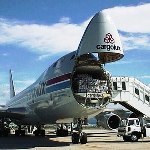
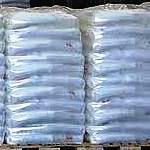

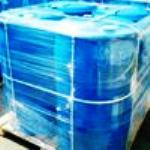
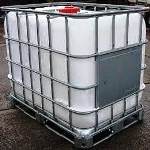
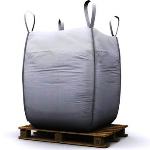
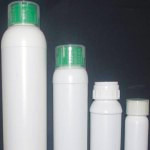
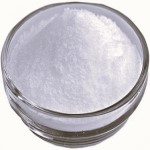
Sodium Succinate CAS Number 150-90-3
For Properties Specifications Uses of Sodium Succinate Anhydrous and Hexahydrate Click Properties, Specifications, Uses, Price, Process of Sodium Succinate Manufacturer.
For For SDS MSDS Sheet of Sodium Succinate Anhydrous and Hexahydrate Click SDS Safety Data Sheet MSDS Sheet of Sodium Succinate Manufacturer.
The Properties, Specifications, Monograph and Uses of Sodium Succinate:
Sodium Succinate USP NF Grade Specifications:
DEFINITION
Sodium Succinate, when dried at 120C for 2 h, contains NLT 98.0% and NMT 102.0% of disodium succinate (C4H4Na2O4).
IDENTIFICATION
A. Infrared Absorption: To check after drying the Anhydrous Sodium Succinate or Sodium Succinate Hexahydrate sample at 120C for 2 h before use.
B. Chromatographic Identity
C. Sodium Meets the requirements.
ASSAY
Acceptance criteria: 98.0% to 102.0%
IMPURITIES
Limit of Sodium Acetate, Sodium Maleate, and Sodium Fumarate:
Sodium acetate: The peak area of acetic acid in the Sample solution is NMT the peak area of acetic acid in the Standard solution, corresponding to NMT 0.2% of sodium acetate in Sodium Succinate.
Sodium maleate: The peak area of maleic acid in the Sample solution is NMT the peak area of maleic acid in the Standard solution, corresponding to NMT 0.1% of sodium maleate in Sodium Succinate.
Sodium fumarate: The peak area of fumaric acid in the Sample solution is NMT the peak area of fumaric acid in the Standard solution, corresponding to NMT 0.1% of sodium fumarate in Sodium Succinate.
Limit of Sulfate: NMT 0.019% as SO4
Acidity and Alkalinity: Dissolve 1.0 g of Anhydrous Sodium Succinate or Sodium Succinate Hexahydrate in carbon dioxide-free water and dilute with water to 20 mL. pH is 7.0 to 9.0
Loss on Drying: Dry at 120C for 2 h.
Sodium Succinate Anhydrous: NMT 2.0% LOD.
Sodium Succinate Hexahydrate: 37.0% to 41.0% LOD.
We offer both Sodium Succinate Anhydrous and Sodium Succinate Hexahydrate.
The MSDS-SDS Hazard Statement of Sodium Succinate:
Sodium Succinate SDS, Safety Data Sheet
MSDS Sheet, Material Safety Data Sheet 06-April-25
Section 1: Chemical Product Identification
Product Name & Other Names: Sodium Succinate
CAS#: 150-90-3
EINECS EC Number: 205-778-7
Relevant uses and uses advised against (if any): Industrial Manufacturing.
Section 2: Hazards Identification
GHS, Globally Harmonized System Classification in accordance with 29 CFR 1910
Classification according to Regulation (EC) No 1272/2008
Not a hazardous substance or mixture according to Regulation (EC) No. 1272/2008.
This substance is not classified as dangerous according to Directive 67/548/EEC.
Labeling according to GHS & Regulation (EC) No 1272/2008
GHS Label Elements None |
Signal Words: None
Precautionary statements:
P261: Avoid breathing dust/fume/gas/mist/vapors/spray.
P262: Do not get in eyes, on skin, or on clothing.
P281: Use personal protective equipment as required.
P302+P352: IF ON SKIN: Wash with plenty of soap and water.
P304+P340: IF INHALED: Remove victim to fresh air and keep at rest in a position comfortable for breathing.
P305+P351+P338: IF IN EYES: Rinse cautiously with water for several minutes. Remove contact lenses, if present and easy to do. Continue rinsing.
P337+313: If eye irritation persists get medical advice/attention.
Section 3: Composition and Information on Ingredients
Product Name & Other Names: Sodium Succinate
CAS#: 150-90-3
EINECS EC Number: 205-778-7
Section 4: First Aid Measures
Always seek medical attention after first aid measures are provided.
Eye Contact: Check for and remove any contact lenses. In case of contact, immediately flush eyes with plenty of water for at least 15 minutes. Get medical attention if irritation occurs.
Skin Contact: Wash with soap and water. Cover the irritated skin with an emollient. Get medical attention if irritation develops.
Inhalation: If inhaled, remove to fresh air. If not breathing, give artificial respiration. If breathing is difficult, give oxygen. Get medical attention.
Ingestion: Do Not induce vomiting unless directed to do so by medical personnel. If large quantities of this material are swallowed, call a physician immediately. Loosen tight clothing.
Section 5: Fire and Explosion Data
Flammability of the Product: Not classed as fire hazard but it may be combustible at high temperature.
Fire Fighting Media and Instructions: Use DRY chemical powder, water spray, fog or foam. Do not use solid water jet as it can scatter the fire.
Special Information In the event of a fire, wear full protective clothing and NIOSH-approved self-contained breathing apparatus with full face piece operated in the pressure demand or other positive pressure mode. At high temperatures under fire conditions, it may produce toxic or irritating fumes.
Section 6: Accidental Release Measures
Personal precautions, protective equipment, and emergency procedures: Avoid breathing dust/fumes/gas/mist/vapors/spray. Use individual protective equipment (waterproof boots, suitable protective clothing, safety glasses, etc.).
Environmental precautions: Do not let the product enter drains, soil or water sources.
Methods and materials used for containment Cleanup procedures and Storage: Contain spilled material. Use a shovel to put the material into a convenient waste disposal container.
Section 7: Handling and Storage
Precautions for safe handling: Apply according to good manufacturing and industrial hygiene practices. Ensure proper ventilation. Wash thoroughly after handling. Do not drink, eat, or smoke while handling. Avoid contact with skin, eyes, and clothing. Minimize dust generation. Avoid breathing dust/fumes/gas/mist/vapors/spray. Keep container tightly closed. Avoid ingestion and inhalation. Use individual protective equipment (waterproof boots, suitable protective clothing, safety glasses, etc.).
Conditions for safe storage, including any incompatibilities: Store in cool, dry, and ventilated area away from heat sources and protected from sunlight in tightly closed original container. Keep air contact to a minimum. Do not leave the material container open. Store protected from heat, sparks and ignition sources and incompatible materials. Avoid inhalation of dust/mist/vapor. Do not store with incompatible materials like oxidizing agents.
Section 8: Exposure Controls/Personal Protection
Engineering Controls: Use process enclosures, local exhaust ventilation, or other engineering controls to keep airborne levels below recommended exposure limits.
Ventilation System: A system of local and/or general exhaust is recommended to keep employee exposures as low as possible.
Personal Respirators (NIOSH Approved): For conditions of use where exposure to dust or mist is apparent and engineering controls are not feasible, a particulate respirator may be worn.
Skin Protection: Wear protective gloves and clean body-covering clothing.
Eye Protection: Use chemical safety goggles and/or full face shield where dusting or splashing of solutions is possible. Maintain eye wash fountain and quick-drench facilities in work area.
Other Control Measures: Maintain good housekeeping in work area. Handle in accordance with good industrial hygiene and safety practice.
Section 9: Physical and Chemical Properties
Physical state and appearance: Solid. (White Powder)
Odor: Odorless.
Odor threshold: Not applicable.
pH: No information found.
Relative density: No information found.
Melting point/freezing point: No information found.
Initial boiling point and boiling range: No information found.
Flash point: No information found.
Auto-ignition temperature: No information found.
Decomposition temperature: No information found.
Upper/lower flammability or explosive limits: No information found.
Vapor pressure: No information found.
Vapor density: No information found.
Evaporation rate: No information found.
Flammability (solid, gas): No information found.
Partition coefficient: n-octanol/water: No information found.
Solubility: Soluble in water.
Viscosity: No information found.
Section 10: Stability and Reactivity Data
Stability: It is stable under ordinary storage conditions.
Incompatibility with various substances: Oxidizing agents.
Polymerization: Will not occur.
Hazardous decomposition products formed under fire conditions: Carbon oxides, Sodium oxides.
Section 11: Toxicological Information
Toxicity to Animals: No data found.
Other Toxic Effects on Humans: Slightly hazardous in case of skin contact, eye contact (irritant), of inhalation.
Mutagenic Effects: No information found.
Developmental Toxicity: No information found.
Reproductive Effects: No information found.
Section 12: Ecological Information
Ecotoxicity: No data found.
Products of Biodegradation: Possibly hazardous short-term degradation products are not likely. However, long term degradation products may arise.
Toxicity of the Products of Biodegradation: No information found.
Persistence and Degradability: Unlikely to persist due to water solubility.
Mobility: Likely to be mobile due to water solubility.
Bioaccumulation/ Accumulation: No information found.
Results of PBT and vPvB assessment: No information found.
Section 13: Disposal Considerations
Waste Disposal: To be disposed as per legal requirement. Follow all the pollution control rules.
Section 14: Transport Information
Land Transport DOT USA, TDG Canada & ADR/RID Europe: Not controlled.
Sea Transport IATA/ICAO: Not controlled.
Air Transport IATA/ICAO: Not controlled.
Section 15: Other Regulatory Information
USA Regulations:
SARA 311/312 Hazards: No SARA hazards.
California Prop. 65 Components: Not listed.
Section 16 - Additional Information
DISCLAIMER: The information and recommendations set forth herein are presented in good faith and believed correct as of the date hereof. It is compiled from various sources, and it is not necessarily all inclusive nor fully adequate in every circumstance. In addition, these suggestions should not be confused with nor followed in violation of applicable laws, regulations, rules, or insurance requirements applicable. This SDS MSDS sheet is intended only as a guide to the appropriate precautionary handling of the material by a professionally trained person using this product. Individuals receiving the information must exercise their independent judgment in determining its appropriateness for a particular purpose. This shall not constitute a guarantee for any specific product features and shall not establish a legally valid contractual relationship. In no case shall our company be liable to loss or damages by the product user.
We offer both Sodium Succinate Anhydrous and Sodium Succinate Hexahydrate.

Sodium Succinate Manufacturers, Suppliers, Exporters, Wholesalers:
King of Chemicals manufacturers

Plot No. 2900/46&47 + 2900/163to167, GIDC, Ankleshwar, Dist. Bharuch, India
India, USA, UAE
TEL: (Office) 91-22-23774610, 91-22-23723564
e-mail: info@kingofchemicals.com
Copyright and Usual Disclaimer is Applicable --- April 8, 2025
If I give you “My Word” Nobody can undo it.
If I sign an “Agreement” my Lawyer will undo it
Our products are for industrial and laboratory use only. The user must test the material before use. We are not dispensing chemists or druggist and do not offer over the counter type (OTC) products for medical use by individuals.
We and our associates manufacture pure chemicals surpassing Monograph Specifications of Analytical Reagent Standards, British & European Pharmacopoeia BP Ph Eur EP Standard, US Pharmacopoeia USP NF Standard, Indian Pharmacopoeia IP Standard, Japan Pharmacopoeia JP Standard, FCC Food Grade Standard. |
|